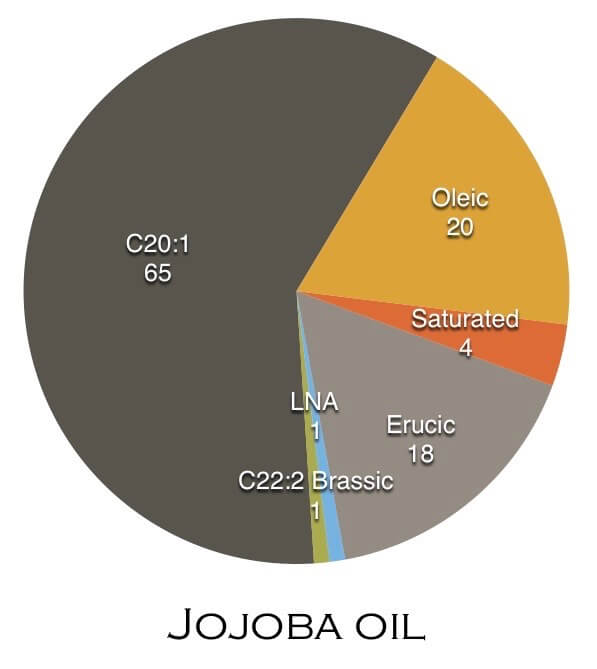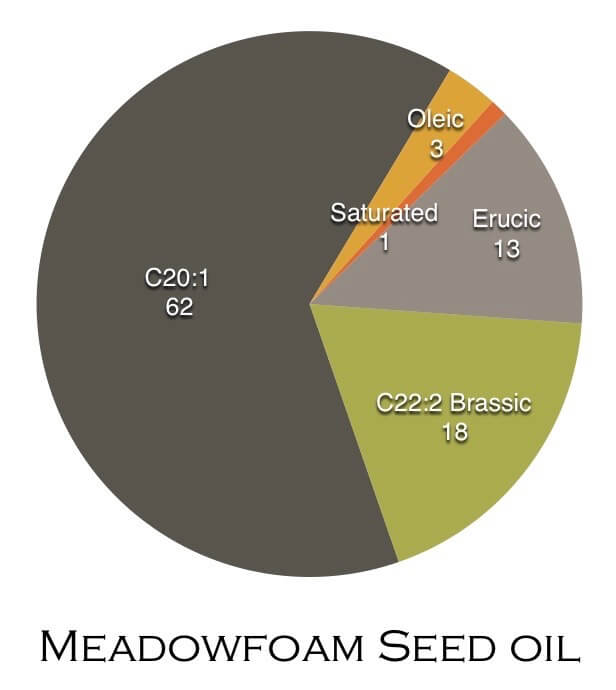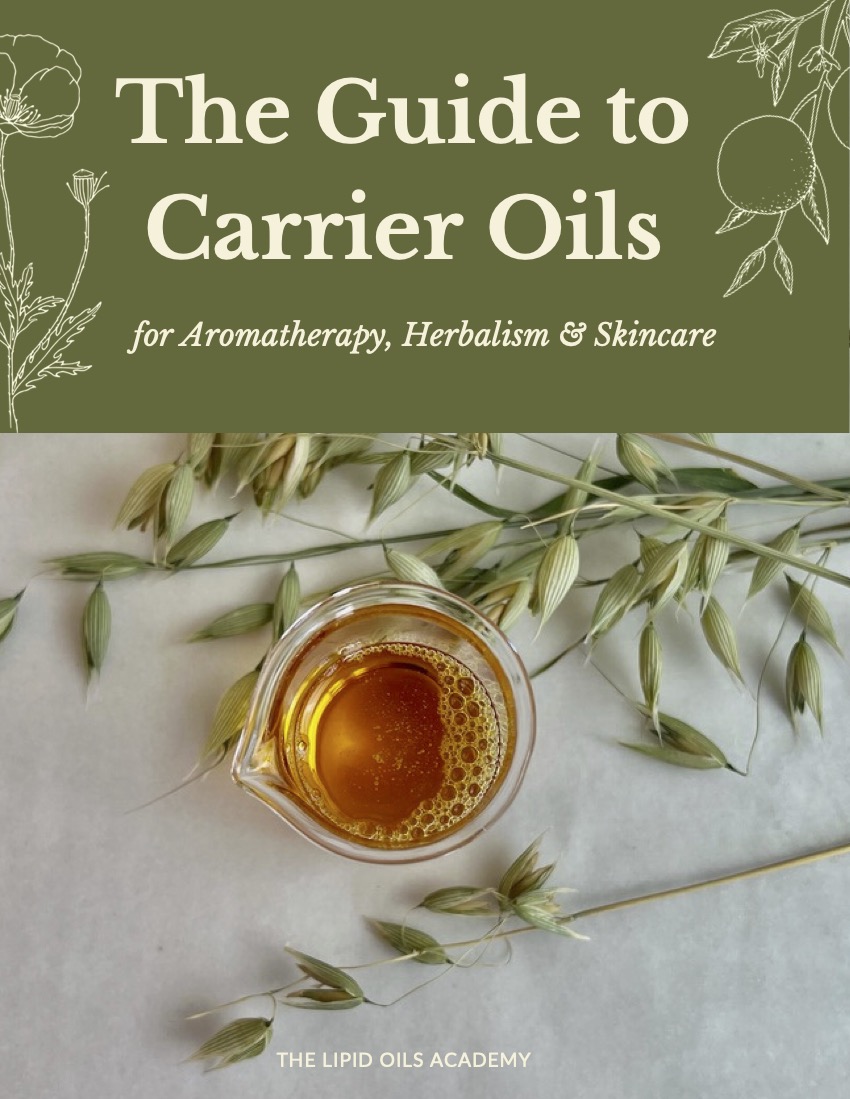Today I want to share three of my favorite cold weather transition oils for skin care.
Jojoba, meadowfoam seed oil and Abyssinian oil.
Sounds exotic doesn’t it! But what they all have in common are very-long chain fatty acids. Any why you might ask is this important? These very-long chains, which are 20 carbons long and longer, are somewhat rare in oils. They are also very valuable for skin care. The long chain fatty acids resist oxidation making them stable against rancidity. They also absorb easily and feel soft on the skin. The reason these oils are so protective, the long chains remain in the upper layers of skin and protect against moisture loss and cold without leaving an oily feel on the skin. These three oils come from completely different regions and climates, but they all have the long chain fatty acids in common, and in the case of jojoba oil and meadowfoam oil, it was this fatty acid makeup that helped to drastically reduce sperm whale hunting.
Let me explain:
In the early and mid 20th century, growing environmental awareness and anti-whaling campaigns created a need for a sustainable, plant-based alternative to the spermaceti from sperm whales. Save the whales was an early environmental campaign that helped trigger a movement towards more sustainable alternatives.
Jojoba Oil
Jojoba is actually a wax rather than an oil, but it is liquid so often called an oil for simplicities sake. This “oil” is a crop cultivated in the American southwest from the hardy, drought tolerant Jojoba shrub. The long chain fatty acids in Jojoba oil have similar qualities to sperm whale oil that was prized for 19th century oil street lamps, industrial uses, as well as in skin care.One of the companies I used to buy jojoba from 25 years ago is actually called Desert Whale!

Meadowfoam Seed Oil
Meadowfoam seed oil is native to the Pacific Northwest and like jojoba oil, it was first cultivated as a sustainable substitute for sperm whale oil. Meadowfoam seed oil has the rare, long chain fatty acids that make it so valuable for industry, and for skin care. Meadowfoam seed oil will help preserve other oils in a recipe, so this is a good one to have on hand.

Abyssinian Seed Oil
And the third oil, Abyssinian oil is a newer oil on the market and one I am just beginning to explore and experiment with. Abyssinian oil also has very-long chain fatty acids like meadowfoam and jojoba oil and comes from the Abyssinian region of East Africa, an area that now includes the country of Ethiopia. It is one of the best-kept secrets I have found, having those beautiful long-chain fatty acids that make it an exceptional oil for skin care.

When we compare the fatty acid makeup of these three oils side by side, you can see that both Jojoba and Meadowfoam have over 60 percent long chain fatty acids, C20:1. Abyssinian oil is a little different. It is made up of erucic acid, which is C22:1, even longer than the long chain fatty acids in Jojoba and Meadowfoam.
Why long-chain fatty acids are exceptional I want to go a bit deeper into why the fatty acids in these three oils are so unusual, and so exceptional for skin care. Most of the oils we use have a fatty acid profile containing a variety of fatty acids eighteen carbons long and less. But meadowfoam, jojoba and Abyssinian oil are a bit different having very-long, twenty carbons long and longer, chain fatty acids.
These long chain fatty acids are also unsaturated, so they feel light and soft on the skin, and they absorb well without a hint of greasy or oily feel to them.
Putting it Together: Using Oils For Skin Care
So how do you use these beautiful, long-chain oils? I mix the oil in my hand with a few drops of water, hydrosol or an alcohol free toner, and then massage the combination into my skin. The water, mixed with the oil gives your skin the hydrating element (water) and the protective element (oil) that you would find in a skin cream.
With this method, and a few good oils, you’ll have dry skin and the cold beat in no time.
What’s your favorite winter skin care oils? Leave a comment below.


